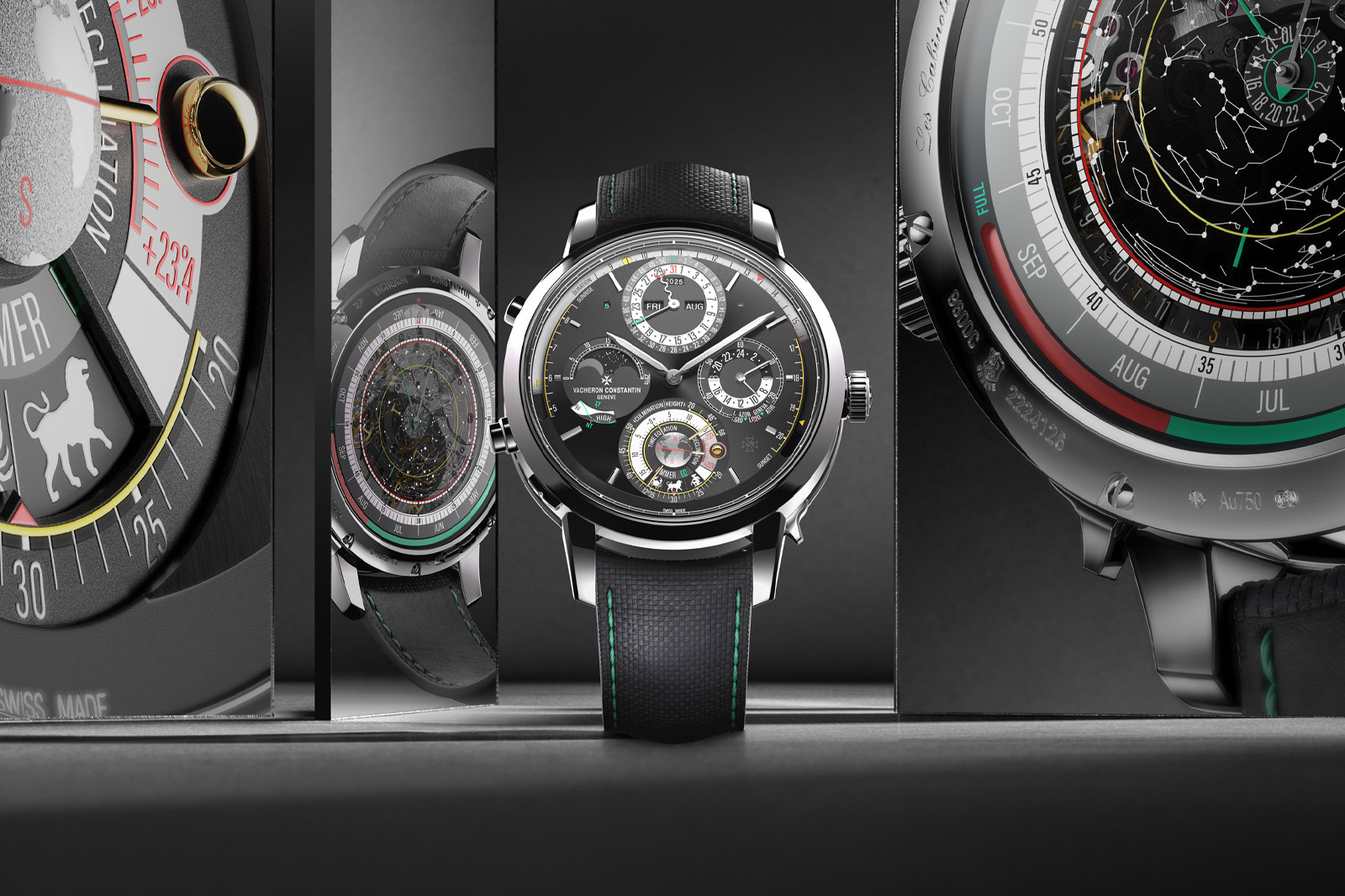


If you’re up to date with your horological world records, and let’s face it who isn’t, then you’ll be familiar with the Vacheron Constantin Berkeley Grand Complication. It’s the world’s most complicated watch with 61 complications. However, it’s to large that it has to be a pocket watch. The title for most complicated wristwatch therefore belongs to a different watch. Not content with that, Vacheron Constantin have decided they want to own that title as well so have launched the Les Cabinotiers Solaria Ultra Grand Complication La Première, bringing the world record home in emphatic fashion.

First the headlines, the watch features a whopping 41 complications housed inside a 45mm x 14.99mm case made from white gold. That’s pretty huge by most standards but given the amount of horological complexity on display, it’s practically a miracle that it’s wearable at all. Fitting all 1,521 components of the calibre 3655 into its dimensions is a mathematical nightmare that took eight years to develop.


To list a handful of the complications there’s standard time, dual time zone, worldtimer, perpetual calendar, moonphase, tide indicator, sun position (including sunrise, sunset, day duration, height of sun above horizon and sun declination angle), astrological signs, temporal tracking of celestial objects, minute repeater with Westminster chime, chronograph, split-seconds chronograph and power reserve indicator.

Two of those complications stand out above the others. The first is the Westminster chiming minute repeater, which is the pinnacle of an already prestigious complication. It uses four hammers and gongs to create a very complex chiming melody that mirrors that of Westminster, hence the name. Its creation involved 7 individual patents out of the 13 patents found in the Solaria Ultra Grand Complication La Première.
The other stand out is the temporal tracking of celestial objects, which is a brand new complication. It allows you to calculate how long it will take for a specific celestial object to become centred in your field of view. It functions by using the split-seconds chronograph on the rear of the watch in conjunction with the sapphire star diagram below.

You stop the first chronograph hand in the centre of the field of view denoted by the green line marker on the celestial map then stop the second hand over the object you wish to time, such as the constellation of Orion. The green arrow on the rear of the first chronograph hand will now be pointing at a 24-hour scale attached to the rear of the second chronograph hand, which tells you how many hours it will take for that celestial object to be centred in your field of view. It’s the kind of complication that has very little practical application unless you happen to be an astronomer but you can be sure I’d fiddle with it all the time.
Unsurprisingly the world record touting Vacheron Constantin Les Cabinotiers Solaria Ultra Grand Complication La Première is a unique piece. While it’s in theory price on request, good luck ever seeing it in person unless it’s on display in a museum.
Price and Specs:
Model:
Vacheron
Constantin Les Cabinotiers Solaria Ultra Grand Complication – La Première
Ref:
9600C/000G-231C
Case:
45mm
diameter x 14.99mm thickness, 18k white gold
Dial:
Metal
black-coloured sunray satin-finished with circular satin-finished edge
Movement:
Vacheron
Constantin calibre 3655, manual winding, 204 jewels
Frequency:
21,600
vph (3 Hz)
Power reserve:
72h
Functions:
41
complications including civil time, sidereal time, solar time, perpetual calendar, moon phases, tide measurement, world time, Westminster minute repeater, and split-seconds chronograph
Strap:
Black
technical calfskin leather with textured effect
Price:
Price
on request (unique piece)
More details at Vacheron Constantin.
Oracle Time